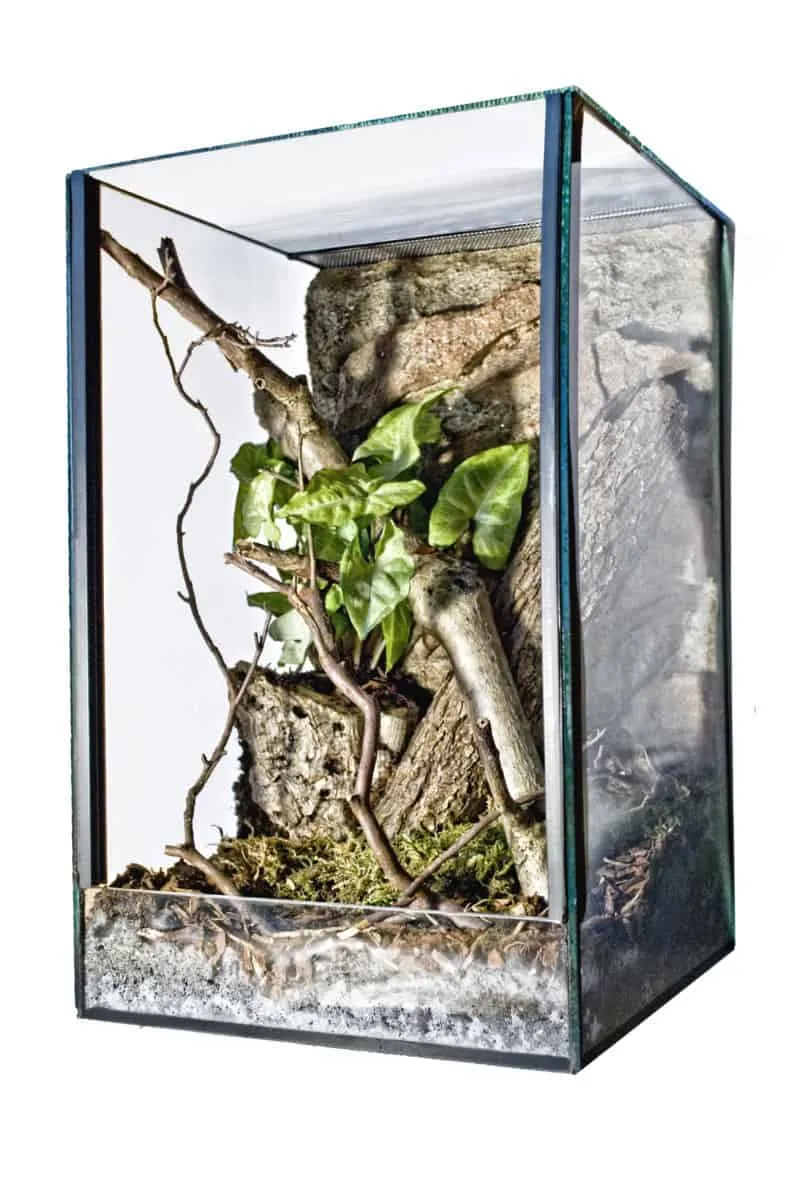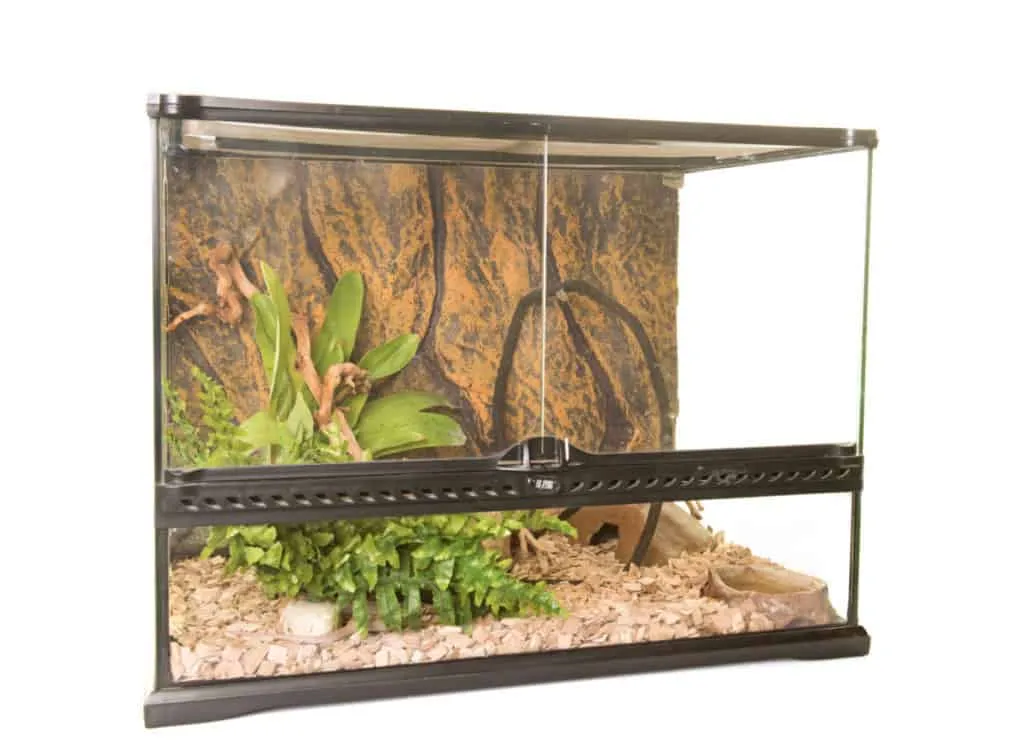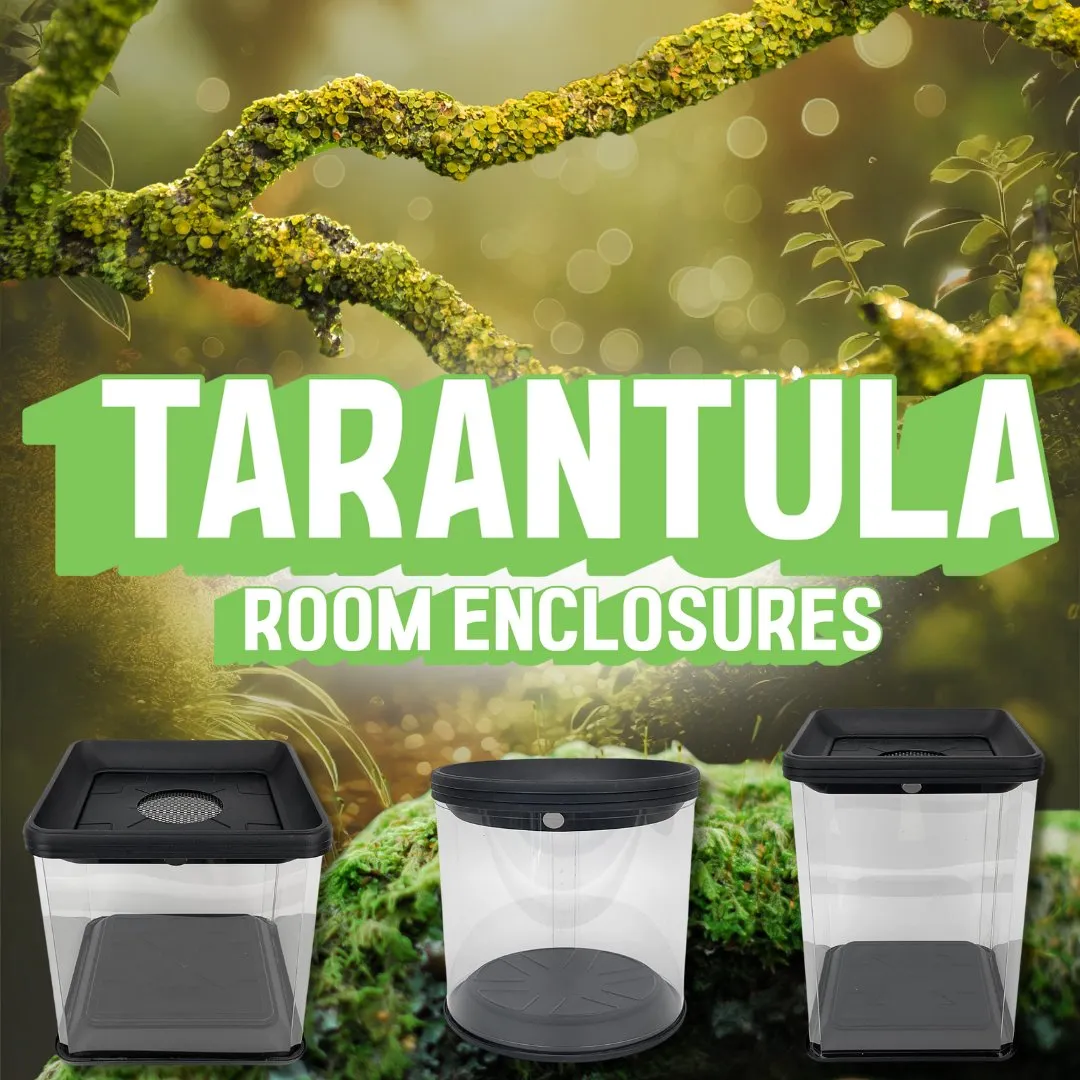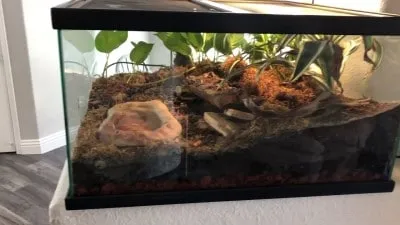What are the Best Tarantula Enclosures?
Choosing the right enclosure is paramount for the health and well-being of your tarantula. A suitable enclosure provides a safe, comfortable, and enriching environment that mimics the tarantula’s natural habitat. Several factors come into play, including the size of the spider, its species, ventilation, and the materials used. The best enclosures prioritize the tarantula’s needs, making it easier for you to maintain and observe your pet. This guide aims to provide you with the essential information to select and set up the perfect tarantula enclosure, ensuring your eight-legged friend thrives. Finding the right enclosure is more than just a box; it’s creating a home where your tarantula can live a long, healthy, and happy life. Proper enclosure design directly impacts the tarantula’s ability to molt successfully, eat comfortably, and explore its surroundings without stress.
Size Matters Choosing the Right Enclosure
One of the most critical factors is the size of the enclosure. The enclosure should be large enough for the tarantula to move around comfortably, molt, and have access to its water dish and hiding place. A general rule is to provide an enclosure that is at least twice the tarantula’s leg span in width and length. Height requirements vary depending on the species; terrestrial tarantulas don’t need tall enclosures, while arboreal species require ample height to climb and build their webs. Overly large enclosures for small tarantulas can make it difficult for them to find food and can also stress them. Conversely, an enclosure that is too small can restrict movement and hinder the tarantula’s development. It’s best to upgrade the enclosure as the tarantula grows, starting with a smaller enclosure for spiderlings and gradually increasing the size as they mature. Careful consideration of size is essential for the overall well-being of the tarantula.
Consider the Tarantula’s Species

Different tarantula species have different needs. Knowing whether your tarantula is terrestrial, arboreal, or fossorial (burrowing) will greatly influence the type of enclosure you choose. Terrestrial species, like the Chilean Rose Hair, generally require more floor space than height. Arboreal species, such as the Green Bottle Blue, need tall enclosures with climbing opportunities like cork bark or branches to mimic their natural environment in trees. Fossorial species, like the Psalmopoeus irminia, need deep substrate to burrow and create their underground homes. Researching the specific requirements of your tarantula species is crucial. Some species also have specific humidity, temperature, and ventilation needs. Failure to meet these requirements can lead to health problems and stress. Always consult resources specific to your tarantula’s species to ensure you provide the optimal living conditions.
Terrestrial Tarantulas Enclosure Needs
Terrestrial tarantulas, which live on the ground, need enclosures that prioritize floor space. These enclosures don’t need to be very tall, as the spiders are not naturally inclined to climb. A good setup includes a shallow layer of substrate (e.g., coconut fiber, peat moss, or a mix of both), a water dish, and a hide such as a piece of cork bark or a half log. The substrate should be deep enough for the tarantula to burrow slightly if it chooses. Adequate ventilation is also critical to prevent mold and maintain appropriate humidity levels. Secure lids are a must, as terrestrial species can still climb and are notorious escape artists. Provide a naturalistic environment with decorations to enhance the tarantula’s well-being. Proper substrate, a hide, and a water source are critical for their health and happiness. Remember to adjust the enclosure size as the tarantula grows and molts.
Arboreal Tarantulas Enclosure Needs
Arboreal tarantulas, which live in trees, require tall enclosures. These spiders are active climbers and spend most of their time above ground. The enclosure should be significantly taller than it is wide to accommodate the tarantula’s climbing behavior. Include sturdy climbing materials such as cork bark, branches, or artificial plants to provide ample opportunities for climbing and web-building. The substrate should be kept moderately moist and should be relatively shallow, as arboreal species don’t typically burrow. Proper ventilation is crucial to prevent the buildup of mold and maintain the right humidity level. Secure the lid to prevent escapes. Ensure the enclosure provides both vertical space and secure climbing surfaces to mimic their natural arboreal habitat, which is essential for their health and well-being. By providing suitable climbing structures, you stimulate their natural behaviors and reduce stress.
The Importance of Ventilation

Proper ventilation is vital for maintaining healthy conditions within the enclosure. Good ventilation prevents the buildup of stale air, excess humidity, and mold growth. A poorly ventilated enclosure can lead to respiratory problems and other health issues for your tarantula. The ventilation system should allow for airflow without compromising the security of the enclosure. This typically involves vents on the sides and top of the enclosure. The size and placement of the vents are important; too few vents or vents that are too small can limit airflow, while too many can cause the enclosure to dry out too quickly. Regularly monitor the enclosure’s humidity levels and adjust the ventilation as needed to maintain the ideal conditions for your tarantula. The correct level of ventilation is key to creating a stable and safe environment.
Materials for Tarantula Enclosures
The material of the enclosure is an important consideration. Glass, acrylic, and plastic are common choices, each with its own set of advantages and disadvantages. The best material offers good visibility, durability, and ease of cleaning. The primary goal is to provide a safe and secure habitat that supports the tarantula’s health and well-being. Each material type impacts the tarantula’s ability to thrive. Ensure the material is non-toxic and can withstand the humidity and any potential digging or climbing the tarantula may engage in. Ultimately, the choice of material depends on your preferences, budget, and the specific needs of your tarantula.
Glass Enclosures
Glass enclosures offer excellent visibility, allowing for clear views of your tarantula. They are also relatively easy to clean and maintain. Glass enclosures are generally durable and can withstand the humidity levels required for tarantula habitats. However, they can be heavy and may break if dropped. Glass enclosures also don’t insulate heat as well as other materials and can be more expensive. Secure ventilation and a tight-fitting lid are crucial in glass enclosures to ensure the safety and well-being of your tarantula. Always choose tempered glass for increased safety, ensuring the enclosure is specifically designed for reptiles or arachnids. Regular cleaning is essential to maintain a healthy environment for your pet.
Acrylic Enclosures

Acrylic enclosures are lightweight, durable, and offer excellent visibility. They are also typically better insulators than glass, helping to maintain stable temperatures inside the enclosure. Acrylic enclosures are less likely to break than glass, making them a safer choice. However, acrylic can scratch more easily than glass, potentially reducing visibility over time. They can also be more expensive than glass or plastic alternatives. Ensure the acrylic is specifically designed for use with reptiles or arachnids. Acrylic is also easy to drill, which can simplify adding ventilation or custom features. Clean acrylic gently to avoid scratches. Consider the long-term durability and cost when deciding between glass and acrylic.
Plastic Enclosures
Plastic enclosures are generally the most affordable option and are lightweight and easy to handle. They come in various sizes and shapes, making them a versatile choice. Plastic enclosures can also be easily modified with ventilation holes or custom features. The downside to plastic is that it may not offer the same level of clarity as glass or acrylic, and some plastics can be prone to scratching. The quality of the plastic matters; choose sturdy, non-toxic plastics designed for use with pets. Plastic enclosures may also be less durable than glass or acrylic. Regular cleaning is essential to maintain the health of your tarantula, and the enclosure should be properly ventilated to prevent mold and mildew. When choosing plastic, check for features like secure lids and adequate ventilation.
How to Set Up the Enclosure
Setting up a tarantula enclosure involves several key components, including substrate, water, hiding places, and decorations. The goal is to create a comfortable and stimulating environment that mimics the tarantula’s natural habitat. Each element plays a role in the tarantula’s health and well-being. Careful planning and consideration of the tarantula’s specific needs are essential. Correct setup also includes managing humidity, temperature, and ensuring the enclosure is secure to prevent escapes. The initial setup lays the foundation for the long-term care of your tarantula. Ensure all the elements are non-toxic and safe for your pet. Proper setup can minimize stress and encourage natural behaviors.
Substrate Selection

The substrate is the bedding material on the bottom of the enclosure. It serves multiple purposes, including absorbing waste, maintaining humidity, and providing a comfortable surface for the tarantula. Common substrate options include coconut fiber (coco coir), peat moss, and a mix of both. The choice of substrate depends on the species of tarantula and its specific needs. Terrestrial species generally benefit from a deeper layer of substrate to allow for burrowing, while arboreal species may need a shallower layer. Avoid substrates that contain fertilizers or pesticides, as these can be harmful to your tarantula. The substrate should be kept clean and replaced periodically to prevent the buildup of harmful bacteria and maintain healthy humidity levels. Check the substrate regularly for signs of mold or excessive moisture, which can indicate poor ventilation or other issues. The substrate’s quality impacts the tarantula’s overall health.
Water and Humidity
Providing a clean water source is essential for all tarantulas. A shallow water dish is ideal; it should be placed on the substrate and regularly filled with fresh, clean water. Avoid using a water dish that is too deep, as smaller tarantulas could potentially drown. Humidity is another critical factor, particularly for certain species. The ideal humidity level varies depending on the tarantula’s species; research the specific requirements for your pet. Use a hygrometer to monitor the humidity levels in the enclosure. Adjust the humidity by misting the enclosure with water, using a water dish, and adjusting the ventilation. Misting frequency depends on the species. High humidity is vital for molting. Ensure the enclosure has proper ventilation to prevent the buildup of mold or mildew. Maintaining proper humidity is critical to your tarantula’s health and its ability to molt successfully. A consistent humidity level ensures your tarantula stays hydrated and comfortable.
Decor and Hiding Places
Decorations and hiding places provide enrichment and security for your tarantula. These elements can reduce stress and encourage natural behaviors. Provide a hide, such as a piece of cork bark, a half log, or a commercially available tarantula hide. This gives the tarantula a place to retreat and feel safe. Add other decorations, such as artificial plants, rocks, or branches, to mimic the tarantula’s natural habitat. Ensure all decorations are secure and non-toxic. Avoid sharp objects or anything that could harm the tarantula during molting. The enclosure should be well-furnished, but not overcrowded, allowing the tarantula to move around easily. The right decorations can significantly enhance your tarantula’s quality of life and promote natural behaviors. Choosing decorations that are safe and appropriate for the size and species of your tarantula is crucial.
Temperature and Heating

Tarantulas are ectothermic animals, meaning they rely on external sources for warmth. The ideal temperature range varies depending on the species; research your tarantula’s specific needs. In most cases, a temperature between 75-85°F (24-29°C) is suitable. You may need to provide supplemental heating using a heat mat or a ceramic heat emitter, especially in cooler climates. Place the heat source on the side or back of the enclosure, not directly under the substrate, to avoid overheating. Monitor the temperature using a thermometer. Avoid using heat lamps, as they can dry out the enclosure and cause burns. Ensure the heat source is regulated by a thermostat to prevent temperature fluctuations and ensure consistent heat. Keep the temperature within the appropriate range to encourage healthy metabolisms and behavior in your tarantula. Too much or too little heat can negatively impact your tarantula’s well-being.
Tips for Easy Maintenance
Regular maintenance is essential for keeping your tarantula healthy and its enclosure in good condition. Proper care includes feeding, watering, cleaning, and preventing escapes. A consistent maintenance routine minimizes stress for both you and your pet. Easy maintenance simplifies the process and helps you stay on top of your tarantula’s needs. Regular maintenance provides an ongoing opportunity to observe your tarantula and identify any potential issues. Follow these maintenance tips to ensure a healthy and thriving habitat for your tarantula. Consistent care also allows you to build a strong relationship with your pet.
Feeding and Watering
Feeding your tarantula involves offering appropriate prey items. Crickets, mealworms, roaches, and other insects are common choices. The frequency of feeding depends on the tarantula’s age and size; spiderlings should be fed more often than adults. Provide a variety of food items to ensure a balanced diet. Remove uneaten prey within 24 hours to prevent the buildup of mold and bacteria. Always provide a clean water dish filled with fresh water. Regularly check the water dish to ensure it’s clean and full. The frequency of feeding and the type of prey should be adjusted based on the tarantula’s age and needs. Overfeeding can lead to obesity, and underfeeding can cause health problems. Provide fresh, clean water at all times. Proper feeding and hydration are vital for the health and vitality of your tarantula.
Cleaning and Waste Removal

Regular cleaning is important to maintain a healthy environment. Remove any uneaten food, dead insects, and waste as soon as you see them. Spot-clean the enclosure weekly, removing any visible debris. Replace the substrate periodically; the frequency depends on the species and the type of substrate used. The substrate should be completely replaced at least every few months. Clean the water dish regularly, removing any algae or debris. Use a mild, pet-safe cleaning solution to wipe down the enclosure. Avoid using harsh chemicals or soaps, as these can be toxic to your tarantula. Proper cleaning helps control odors, prevents the buildup of bacteria, and ensures a healthy environment. Consistent cleaning keeps your tarantula’s enclosure clean and safe, reducing the risk of illness and stress.
Preventing Escapes
Preventing escapes is crucial. Tarantulas are expert escape artists, so ensuring the enclosure is secure is essential. Use a tight-fitting lid with secure fasteners. Regularly check the lid to ensure it’s properly sealed. Avoid leaving any gaps or openings where the tarantula could squeeze through. Inspect the enclosure frequently for potential escape routes. Make sure the ventilation holes are appropriately sized. Be cautious when opening the enclosure for feeding or cleaning, and always keep a close eye on your tarantula. Keep the enclosure in a secure location away from children and pets. If your tarantula escapes, remain calm and carefully search the area, paying attention to dark, secluded spaces. Preventing escapes protects both your tarantula and your home. Secure the enclosure meticulously to keep your pet safe and sound.
Common Mistakes to Avoid
Several common mistakes can negatively impact the health and well-being of your tarantula. Avoiding these mistakes will help you create a thriving environment for your pet. From inappropriate enclosure sizes to improper humidity levels, these errors can lead to stress, illness, and even death. Awareness is key. Understanding and avoiding common pitfalls will greatly improve your chances of successfully caring for your tarantula. Paying close attention to these details can make a huge difference in your tarantula’s health and happiness.
- Using an enclosure that is too small. The enclosure should be at least twice the tarantula’s leg span in width and length.
- Failing to research the specific needs of your tarantula species. Different species have different requirements for humidity, temperature, and substrate.
- Providing improper ventilation, which can lead to the buildup of mold and humidity.
- Using a substrate that is too dry or too wet. The substrate should be kept at the correct moisture level for your tarantula’s species.
- Overfeeding your tarantula. Feed adult tarantulas only once or twice a week.
- Handling your tarantula unnecessarily. Tarantulas are best observed and admired from a distance.
- Using a heat source that is too hot or improperly placed. Heat lamps can cause burns, while heat mats should be placed on the side or back of the enclosure.
- Failing to provide a secure enclosure. Tarantulas are escape artists; a tight-fitting lid is essential.
- Using harsh chemicals or cleaners in the enclosure. Always use pet-safe cleaning solutions.
- Ignoring signs of illness or stress. Watch for changes in behavior, appetite, or activity levels.
